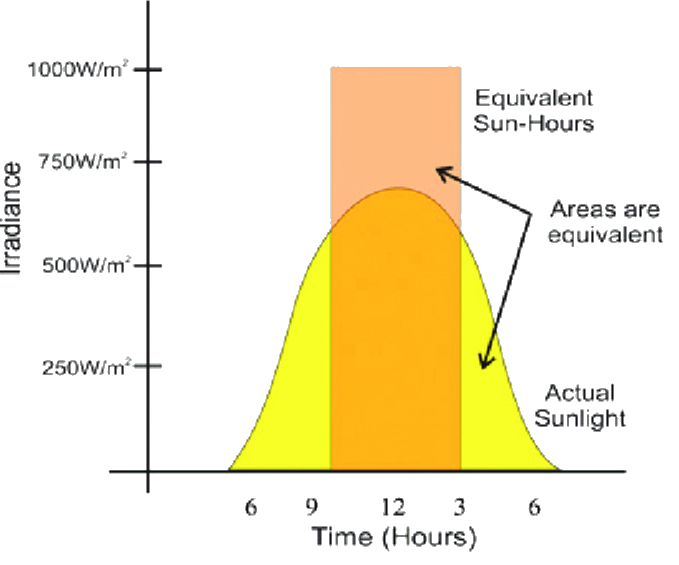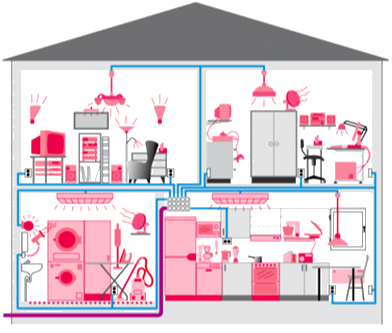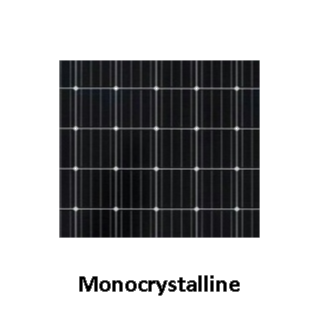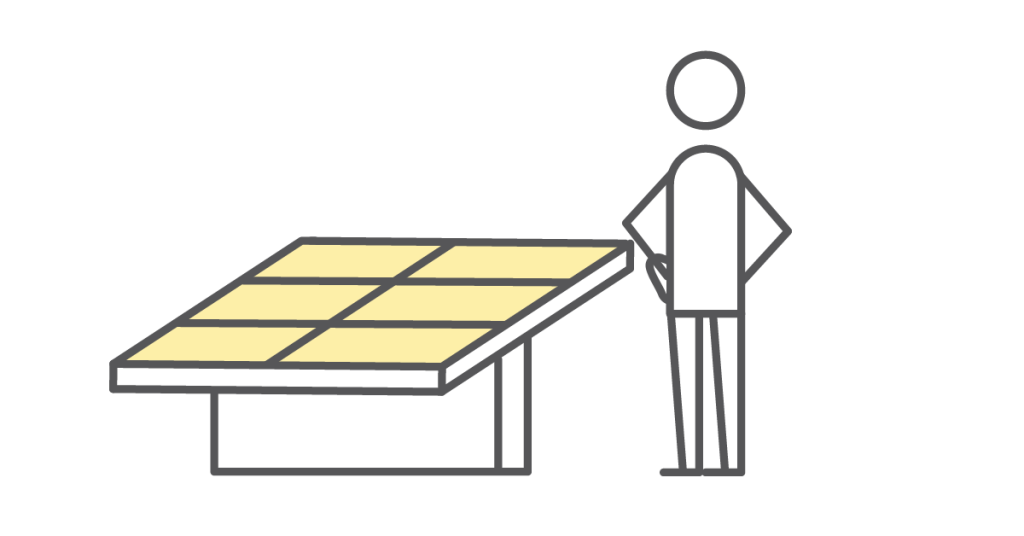Photovoltaic Systems

Step 1: Peak Sun Hours

Peak Sun Hours refer to the number of hours in a day during which the sun’s intensity is strong enough to allow for efficient solar power generation.
Pick a Country
The average peak sun hours in different countries around the world varies from to another.
Graph
Step 2: Energy Consumption

Peak Sun Hours refer to the number of hours in a day during which the sun’s intensity is strong enough to allow for efficient solar power generation.
Appliances Table Examples
| Appliance | Power (Watts) | Usage (hours/day) |
|---|---|---|
| Refrigerator | 100-400 | 4-8 |
| Air conditioner | 1000-5000 | 4-8 |
| Water heater | 1500-5000 | 2-3 |
| Washing machine | 350-500 | 1-2 loads/week |
| Dishwasher | 1200-2400 | 7-14 loads/week |
| Microwave | 600-1500 | 15-30 min/day |
| Toaster | 800-1500 | 15-30 min/day |
| Coffee maker | 800-1200 | 15-30 min/day |
| Blender | 300-1000 | 15-30 min/day |
| Computer | 50-250 | 2-4 hrs/day |
| Printer | 50-1000 | 1-2 hrs/day |
| Lighting (LED) | 5-20 | 4-8 hrs/day |
| Lighting (incandescent) | 40-100 | 4-8 hrs/day |
Calculate The Power Consumption
Step 3: PV Panel Selection


PV panel selection criteria involve considerations such as power output, efficiency, size, durability, manufacturer reputation, cost, and compatibility with the rest of the solar energy system. These factors should be carefully evaluated to ensure the best fit for the specific needs and budget of the homeowner or business owner.
Polycrystalline Panels vs Monocrystalline Panels

Solar Panel Criteria
Step 4: PV Panel Losses

There are various types of losses that can occur in a solar panel system. These losses include conversion losses, thermal losses, wiring losses, shading losses, dirt and debris losses, and module mismatch losses. Each of these losses can have a negative impact on the efficiency and output of the solar panel system.
Type of Losses

Step 5: Energy Replacement %

When considering replacing the current energy resource with solar panel energy, several factors should be taken into account. These include the energy consumption of the building or system, the solar resource available at the location, the energy efficiency of the equipment and building design, the economic feasibility of solar energy, and the environmental goals of the project or organization. By evaluating these factors, it is possible to determine the appropriate percentage of solar energy replacement and achieve an optimal balance of energy production, cost, and environmental impact.
Select a Solar Energy % Replacement
Step 6: The Number of Panels

Calculate the number of photovoltaic (PV) panels required to meet the energy consumption needed based on the calculated parameters previously